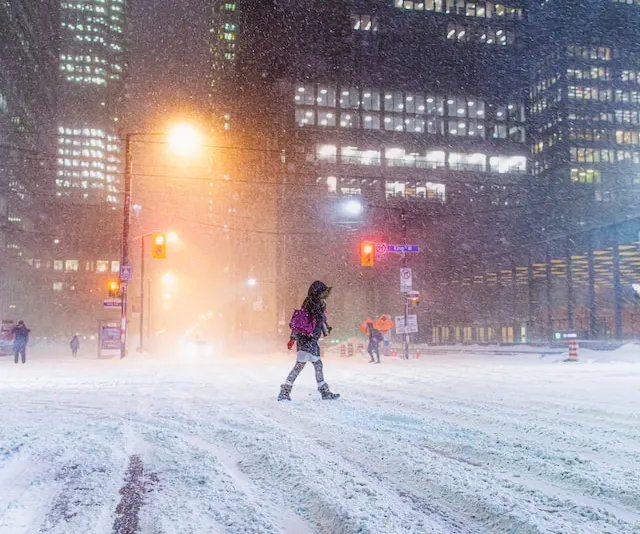How deadly weather in Quebec may impact your insurance rates

Climate change is a global concern, and in recent years it has been felt profoundly across our country. One of climate change’s “symptoms” – so to speak – has been felt in the form of an increase in natural disasters, which in turn have been destroying physical assets globally.
Canada is especially at risk when it comes to deadly weather, courtesy of the terrain. Quebec, being especially humid, and recently a tremendous boost to the annual rainfall total has resulted in dramatic flooding. In recent years, there have been millions of damages to homes, vehicles, and properties, some instances of weather even taking lives.
Everything is being impacted by a rise in deadly weather. What about your insurance? In this blog post, Panda7 will dig into the insured damage costs that are increasing each year, how insurers are changing the way that insurance is written in order to assess new catastrophe risks, and how your insurance rates are being impacted.
Insured damage costs increasing each year
In 2021, severe weather in Canada caused over $2.1 billion in insured damage. Severe storms, wildfires, hailstorms, tornadoes, floods, and more have contributed to the increase in global losses, wrecking commercial properties, residential buildings, and automobiles. Losses, unfortunately, seem to be trending upwards as each year, natural disasters destroy more and more assets – running into the multiple billions’ worth of damage costs.
Homeowners are having to bear the brunt of this all. No home is built to be completely “stormproof” – although we can mediate the impact of certain storms with storm shutters, newer built homes constructed to withstand harsh winds and other damages, fireproof roofs, etc. – which means that when extreme weather does occur, there’s no much we can do but file a claim. At this rate, climate change is said to be irreversible, which means that there will be steady increases in insurance premiums as millions worth of insured damages begin to add up.
Insurers finding new ways to assess natural catastrophe risks
As the times change, so does insurance. Insurance companies are working hard to find ways to assess the degree of extreme natural catastrophe risks, as well as to develop new insurance solutions that incorporate an in-depth knowledge of what risks are involved/what factors are impacted.
It is expected that a lot of research must be conducted with regards to the scientific correlations and an analysis of respective applicable high-level data is a critical element when determining the overall risks and trends that are associated with natural hazards. Of course, this isn’t recent news. Research conducted regarding insured losses and natural disasters goes back to decades ago, as early as the 1970s when the climate crisis and its impending impacts on our environment were becoming more commonplace. Insurance specialists, in conjunction with environmental scientists, have been assessing the wide range of different natural hazards that could cause insured losses, such as thunderstorms, floods, volcanic eruptions, earthquakes, and cyclones.
Insurance rates are rising
Unfortunately, what this all means is that insurance rates are rising. Climate change is directly correlated to the number of overall damages and asset losses experienced in our country which, unfortunately, means more claims are being filed, and providers are having to pay out for these claims.
What does this mean? Well, if more claims are being paid out, then insurance companies are losing money. Insurance companies are having to protect their revenues, which means that in areas where climate-related risks are extremely high, insurers may even stop providing coverage altogether. For those who need insurance, this leaves very little option and increased prices to select from.
Other factors are impacting the raise in insurance rates as well. This includes low interest rates and the rising cost of building materials – with the impact from the COVID-19 closures still reverberating throughout our economies.
Reducing your insurance rates today
While you can’t reverse climate change impacts entirely on your own, there are things you can do to help reduce your insurance rates overall. Follow this list of tips to soften the blow that increased deadly weather costs may be having on your premiums:
- Go paperless
- Bundle your insurance policies
- Purchase monitoring systems for your home
- Install storm shutters
- Install a backwater valve or sump pump in your basement
- Replace your roof’s shingling with impact-resistant materials
- Raise your deductible amount
- Ask about eligible discounts
Every insurance provider is different. Our goal here at Panda7 is to get you the most affordable insurance for the lowest price, without ever sacrificing on your needs. For more tips based on your personal circumstances, consult with a broker.
Weather insurance
Is there insurance for climate change? Well, no. Even though it’s been speculated, no one can buy weather home insurance just yet. A standard home policy will still include coverage for severe weather incidents, like wind, hail, fire, and lightning. Flood damage, landslides, avalanches and earthquake damage are typically not covered by home insurance (which can sometimes come as a surprise to homeowners.) In Quebec, flood insurance is highly recommended due to the nature of the kind of climate crisis we tend to experience.
Home insurance is evolving to combat the latest threat. It is advised that every Canadian – especially us living in Quebec – add water coverage/overland flood insurance to their home insurance. Panda7 can walk you through the purchase of this endorsement. Get a quote or give us a call today.

